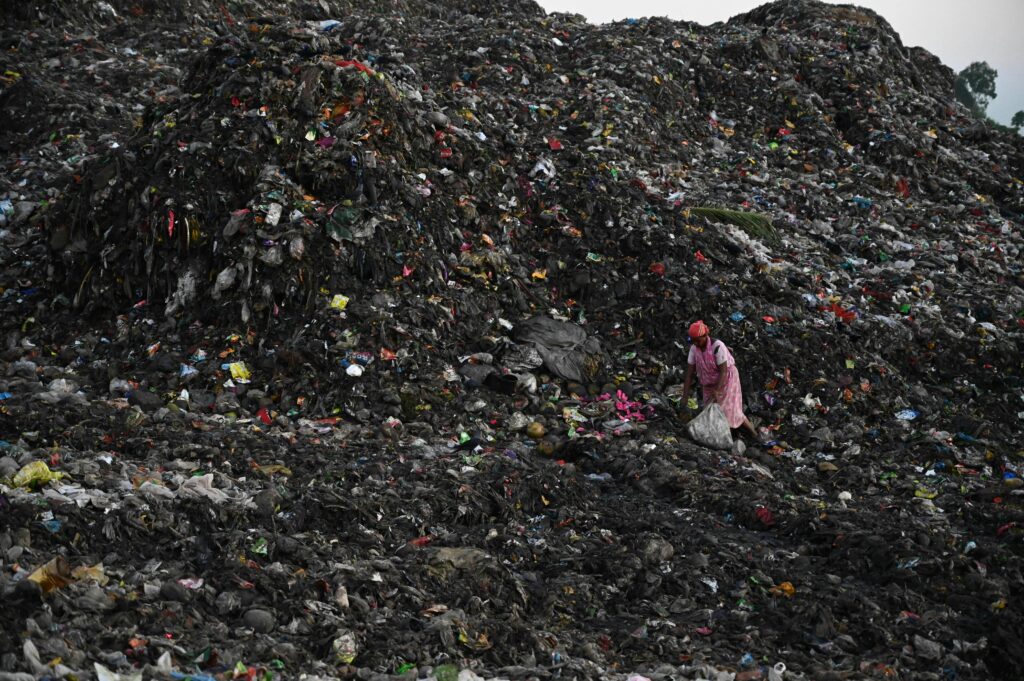
The construction industry in India, a powerhouse of economic growth, faces a critical juncture. With the sector contributing significantly to environmental degradation generating about 150 million tons of construction and demolition (C&D) waste annually and consuming vast resources it must embrace sustainable practices. The circular economy offers a transformative approach, moving away from the “take-make-waste” model to one that prioritizes resource efficiency, waste minimization, and material reuse. In construction, this means designing buildings where every brick, beam, and panel is part of a regenerative lifecycle. This blog explores how the circular economy is reshaping construction in India, spotlighting innovative projects, strategies, and the path to a sustainable built environment.
What is the Circular Economy in Construction?

The circular economy in construction focuses on closing the material loop. Resources are sourced sustainably, used efficiently, and designed for reuse, recycling, or biodegradation. Unlike the linear model, where materials are extracted, used, and discarded, the circular approach emphasizes:
- Durability: Creating long-lasting buildings and components.
- Reusability: Designing structures for disassembly and repurposing.
- Recyclability: Using materials that can be processed into new products.
- Waste Reduction: Minimizing C&D waste through innovative practices.
In India, where rapid urbanization and infrastructure development are surging, these principles are vital for balancing growth with environmental stewardship.
Why It Matters in India

India’s construction boom is staggering, with urban areas expected to house 590 million people by 2030, according to the Ministry of Housing and Urban Affairs. This demands massive resource extraction, straining supplies of sand, cement, and water. Meanwhile, C&D waste clogs landfills, with only 5% currently recycled, per the Centre for Science and Environment. The circular economy aligns with India’s sustainability goals, including its Paris Agreement commitments and the Swachh Bharat Mission. It also addresses economic pressures, as fluctuating material costs push developers toward resource-efficient solutions.
Pioneering Projects in India
India is witnessing a rise in circular construction projects that showcase innovation and scalability. Here are three inspiring examples:
1. The C&D Waste Recycling Plant, Delhi

Delhi generates about 5,000 tons of C&D waste daily, much of it dumped illegally. The city’s first C&D waste recycling plant, operated by IL&FS Environment in Burari, processes 2,000 tons daily, producing recycled aggregates, sand, and bricks. These materials have been used in projects like the Delhi Metro and affordable housing, reducing landfill burden and virgin resource use. The plant’s success has inspired similar facilities in Ahmedabad and Bengaluru.
2. The Bamboo House, Auroville
In Auroville, Tamil Nadu, the Bamboo House by Auroville Earth Institute showcases circularity through sustainable materials. Built using locally sourced bamboo, rammed earth, and recycled wood, this residential project minimizes environmental impact. Its modular design allows for easy disassembly, and the use of biodegradable materials ensures minimal waste. This project highlights how traditional Indian materials can drive modern circular design.
3. The Waste-to-Wealth Pavilion, Mumbai
During Mumbai’s Kala Ghoda Arts Festival in 2019, the Waste-to-Wealth Pavilion by Studio Emergence demonstrated circular principles. Constructed from recycled plastic, discarded timber, and reclaimed metal, the temporary structure was fully demountable. After the festival, its components were repurposed for community projects in Mumbai’s slums, proving that even temporary installations can have lasting impact.
Strategies for Circular Construction in India

Implementing circularity in India’s construction sector requires adapting global strategies to local contexts. Here are key approaches:
1. Design for Disassembly
Buildings should be conceived as “material banks,” with components designed for easy dismantling. This involves using reversible fixings (e.g., bolts instead of adhesives) and standardizing elements. For example, the Infosys campus in Bengaluru incorporates modular steel structures that can be disassembled and reused, setting a precedent for corporate architecture.
2. Material Passports
A material passport digitally tracks a building’s components, their sources, and reuse potential. In India, where informal recycling is common, formalizing this through platforms like the Building Material Reuse Association (BMRA) could enhance transparency. Pilot projects in Hyderabad are exploring material passports for public infrastructure.
3. Upcycling and Recycling

Upcycling transforms waste into higher-value products, while recycling *Upcycling transforms waste into higher-value products, while recycling processes materials into new goods. In India, companies like EcoBricks in Pune produce bricks from C&D waste and fly ash, used in low-cost housing. Plastic waste is also being upcycled into tiles and insulation panels in cities like Chennai.
4. Modular and Prefabricated Construction
Modular construction reduces waste and enables adaptability. Firms like Tata Housing are pioneering prefabricated homes in rural India, using factory-made concrete panels that cut construction time and waste. These homes can be reconfigured or relocated, supporting circularity.
5. Lifecycle Assessments (LCA)
LCAs evaluate a building’s environmental impact across its lifecycle. Indian architects are increasingly using tools like Tally to assess material choices and optimize circularity. For instance, the Green Building Council of India incorporates LCA in its ratings, encouraging sustainable design.
Challenges and Opportunities

India’s circular construction journey faces challenges. Building codes often prioritize conventional materials, sidelining recycled alternatives. The C&D waste recycling ecosystem is nascent, with limited facilities and inconsistent supply chains. High upfront costs for circular designs deter developers, and the industry’s informal workforce complicates standardized practices.
However, opportunities abound. The government’s Smart Cities Mission and PMAY (Pradhan Mantri Awas Yojana) emphasize sustainability, creating demand for circular solutions. Initiatives like the C&D Waste Management Rules (2016) mandate recycling, and startups are innovating with AI-driven waste sorting and BIM for lifecycle planning. Circular buildings also promise cost savings through reduced waste and energy use, appealing to developers.
The Road Ahead
The circular economy in construction is a necessity for India, where urban growth and environmental pressures collide. By treating buildings as living systems where materials are reused, recycled, or biodegraded India can lead in sustainable development. Architects, policymakers, and communities must collaborate to scale these practices, drawing inspiration from projects like Delhi’s recycling plant, Auroville’s Bamboo House, and Mumbai’s Waste-to-Wealth Pavilion.
Picture an India where skyscrapers rise from recycled steel, homes are built from biodegradable bamboo, and demolition gives way to disassembly. This future is achievable, driven by innovators who see waste as wealth and buildings as legacies. The circular economy isn’t just about constructing structures it’s about constructing a sustainable India.

